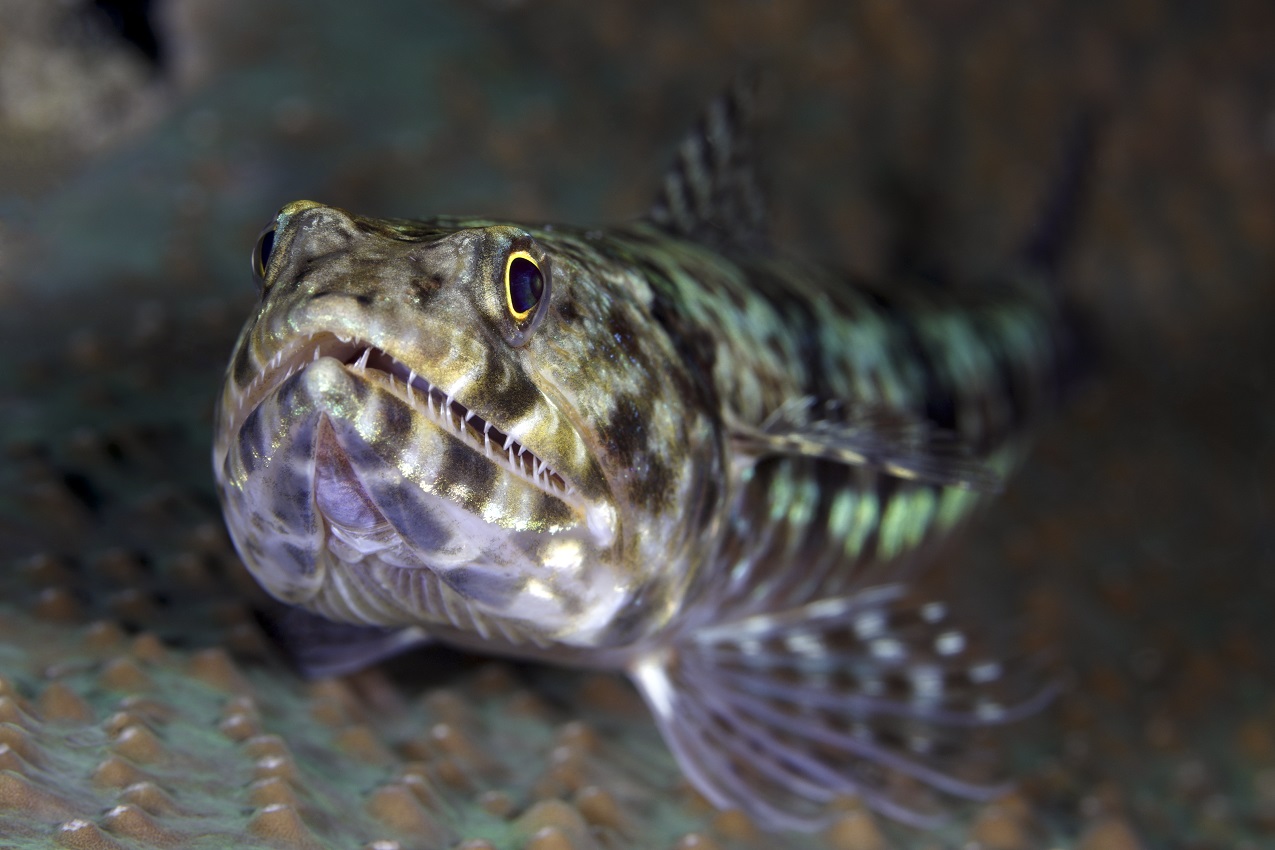I test shot the Canon EOS R for four days in July at the remote Tubbataha Reef, UNESCO World Heritage Site of the Philippines. My camera rig was complete with underwater housing, strobes, and the Control Ring Mount Adapter EF-EOS R, provides compatibility with my existing Canon EF lenses. As mirrorless cameras work very differently from the DSLRs I am used to, there was lots to learn within a short time. Isolated and without Internet help, I resorted to shooting mostly with factory-set functions. Fortunately, this camera performed well and was brilliant in several key areas.

Canon EOS R, f/7, 1/200d, ISO 250
During a very strong current dive, I only had one chance to shoot when quickly drifting past this scene. The sensor recorded the colours of the crinoids and soft corals brilliantly.
As a DSLR shooter, one of the concerns I had with mirrorless systems was the quality of the viewfinder. It became apparent after just the first dive that the Canon EOS R’s high-quality electronic viewfinder produces quite a realistic rendition of the scenes unfolding in front of me, unlike the flat static fuzz I’d witnessed in other mirrorless systems. I really appreciated the viewfinder being able to playback images and also display numerous camera settings. This allowed me to keep perfectly still when confirming exposures, reducing the risk of scaring away skittish subjects, since I didn’t have to lift my head and fumble about to check the camera’s LCD.
As always, getting correct exposure is essential with this camera. For example, a RAW file that is shot way too dark and pushed in post-processing to look brighter will show visible noise in the shadow areas in any camera. Nowadays, it seems low-light performance topside is a common yardstick to measure a sensor’s robustness. But for underwater work, how a camera handles low-light conditions can be even more important since we always have less light below the waves.
Again, I was able to take advantage of the features of the Canon EOS R to review the exposure of the resulting images straight from the viewfinder. There was no unnecessary movement to frighten the subject, so I took my time to get the shot I wanted.
Learn why the EOS R is the ideal camera for low-light photography:
Exploring the City at Night with EOS R
Night Photography: How to Shoot Light Painting with EOS R
Here are 5 Reasons Why the EOS R is Ideal for Night Photography

Canon EOS R, f/11, 1/250s, ISO 100
As we descended the wall of Tubbataha's pristine coral reef, I found my subject and moved in slowly. The Canon EOS R's Dual Pixel CMOS AF system, with up to 5,655 selectable autofocus (AF) positions, had no trouble locking onto this low-contrast variegated lizardfish (Synodus variegatus).
The underwater world can be a challenge for any camera. Wrapping up my time diving along the stunning Tubbataha Reef, I turned my attention to my laptop and began a close review of the image files. The Canon EOS R has a 30.3-megapixel full-frame sensor, giving us plenty of resolution to work with. I can say now that the images take very well to cropping. Colours are clean and natural, comparable even to the EOS-1D X series, but with more dynamic and beautiful saturations. I know that’s a bold claim but I have shot these cameras for years and was very impressed the Canon EOS R was at that level. I can’t wait for the opportunity to spend even more time with this camera, as it felt like I had experienced just the tip of the iceberg.
Read more underwater adventures with the EOS R: The Canon EOS R: Capturing Underwater Wonders
































